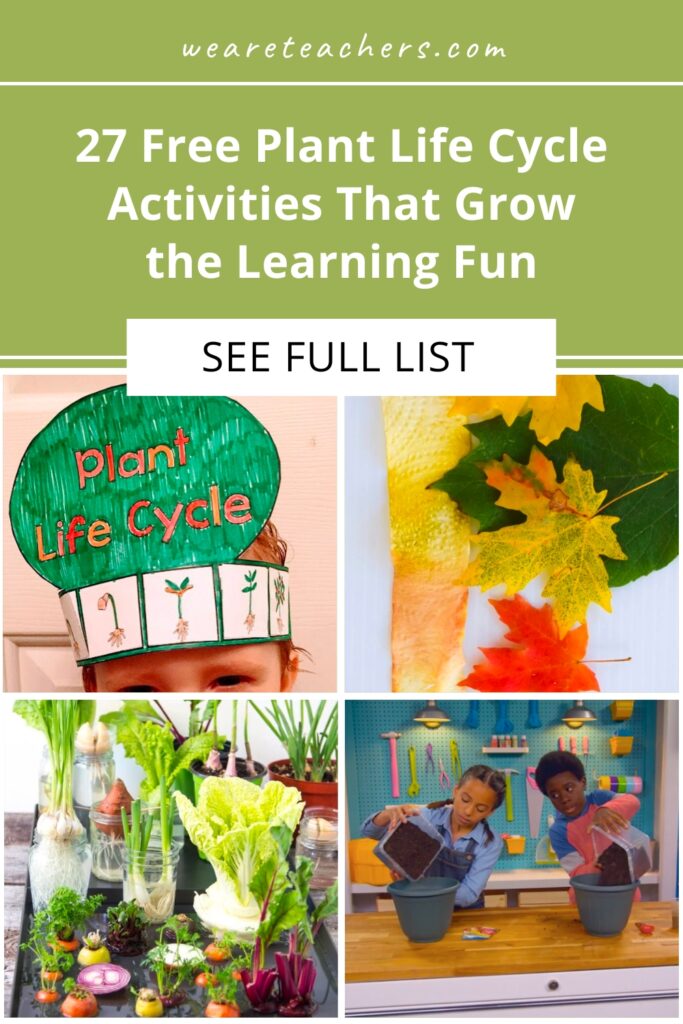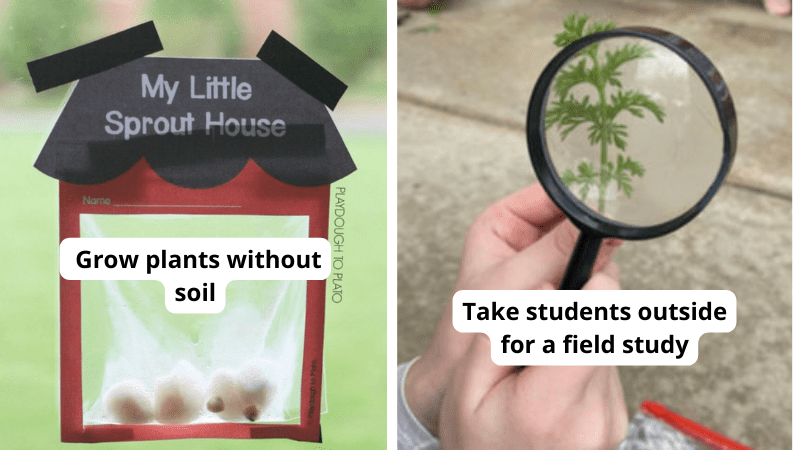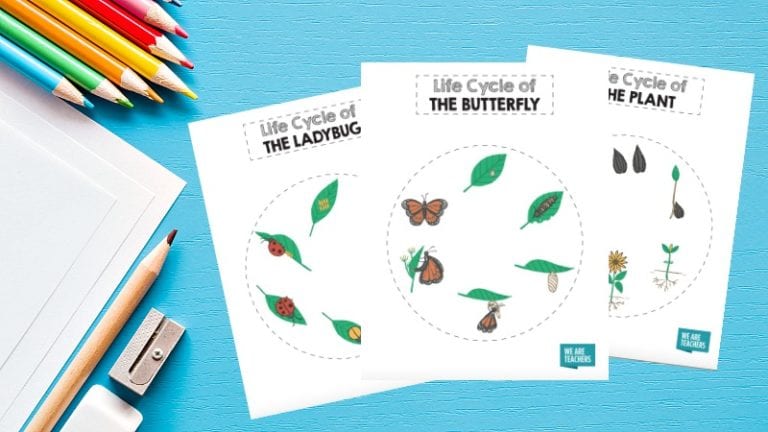Looking for creative plant life cycle activities? We have 27 fun and free teaching ideas including videos, hands-on experiments, printables, and more. Your students will love learning about the cycle and how they can help plants grow and thrive.
1. Read The Tiny Seed by Eric Carle
Eric Carle’s The Tiny Seed is one of the best plant life cycle references for little ones. Listen to it for story time, then use the book as a springboard for further activities.
2. Start with an anchor chart
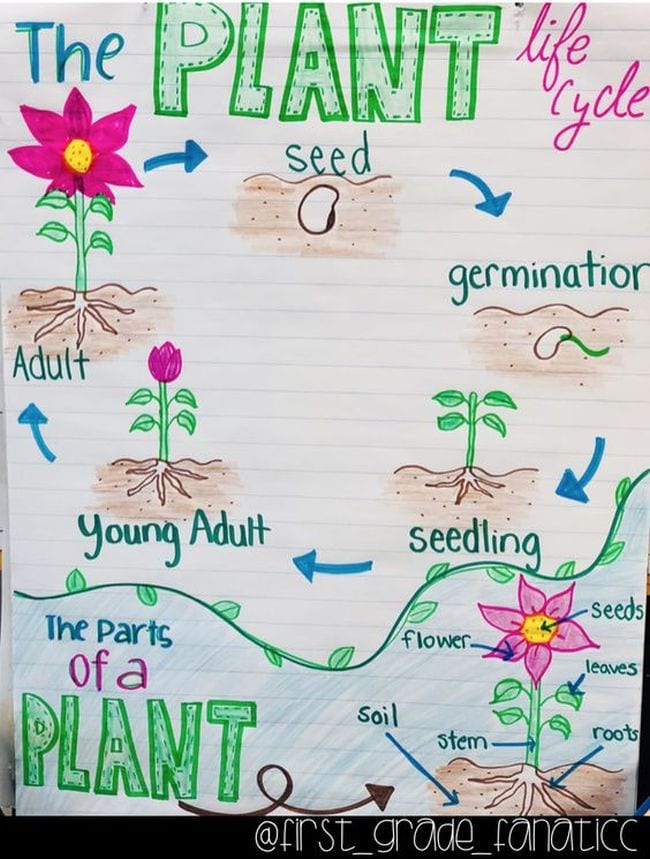
Have your students help you create an anchor chart of the plant life cycle, then post it in your classroom for reference as you do some hands-on learning.
Learn more: Plant Anchor Chart from First Grade Fanatic/Pinterest
3. Explore the question “How does a seed grow into a plant?”
If you need a strong video to kick off a lesson about seeds or the plant life cycle, this is a good place to start.
Learn more: SciShowKids on YouTube
[contextly_auto_sidebar]
4. See it grow in slow-mo
Check out this time-lapse video that shows the fascinating details of how a plant’s root system grows quickly over the course of a few days. After this, kids will definitely want to see it happen for themselves!
5. Spin a plant life cycle wheel
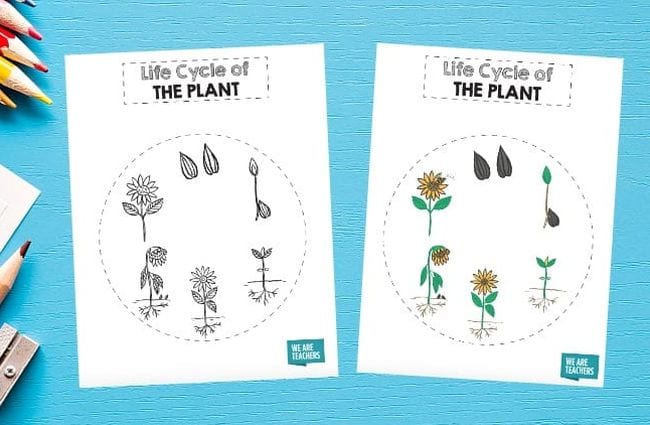
Grab the free printables and watch this video to learn how to turn them into an interactive learning tool with paper plates.
Learn more: Plant Life Cycle Printables from WeAreTeachers
6. Germinate in a jar

This is one of those classic plant life cycle activities every kid should try. Grow a bean seed in wet paper towels up against the side of a glass jar. Students will be able to see the roots form, the sprout take off, and the seedling reach for the sky!
Learn more: Germination Jars from How Wee Learn
7. Build a sprout house

This is another cute idea for watching seeds sprout. For this one, all you need is a sunny window (no soil required).
Learn more: Sprout House from Playdough to Plato
8. Sort sprouted seeds
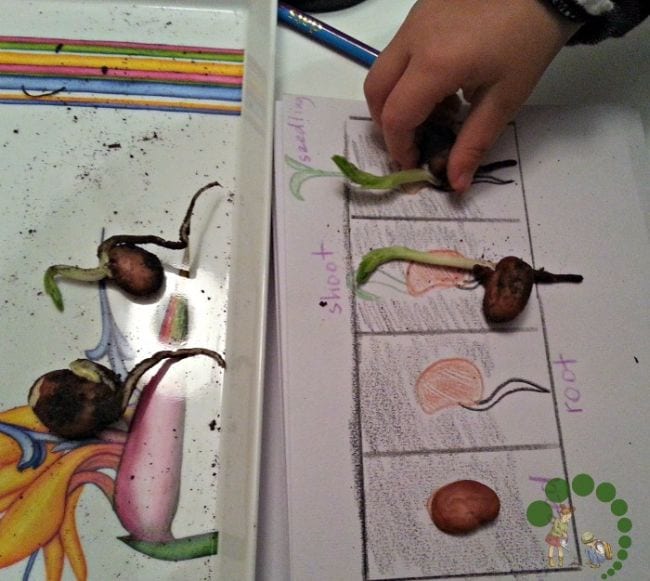
As your seeds begin to grow, sort and draw the various stages. Little ones can learn simple vocab like root, sprout, and seedling. Older students can tackle advanced terms like cotyledon, monocot, and dicot.
Learn more: Seed Sorting from Montessori Nature
9. Conduct a plant dissection experiment

Using magnifying glasses and tweezers, students will dissect flowers or food plants to learn the different parts. Handy tip: You don’t need separate plants for every student. Bring in one plant and give each student a different part.
10. Create living art with cress

Watercress is fun to watch because it grows very quickly on damp cotton. Try growing it as “hair,” or sow the seeds to create patterns or letters.
Learn more: Watercress Growing from The Imagination Tree
11. Sprout sweet potatoes

Not every plant needs seeds to reproduce! Grow a sweet potato to learn about a different kind of plant life cycle.
Learn more: Sprouting Sweet Potatoes from Pre-K Pages
12. Discover why seeds have coats

Seed coats provide protection, but what happens if you remove them? Go hands-on and find out in this interesting experiment.
Learn more: Seed Coating Experiment from Gift of Curiosity
13. Sculpt the plant life cycle in clay
Can’t grow a plant yourself? Sculpt one from clay instead! Watch this Claymation video for inspiration, then pull out the Play-Doh and get to work!
Learn more: iKit on YouTube
14. Don’t forget about pollinators!

Seed-bearing plants require pollination, often helped along by insects like bees and butterflies. This pipe cleaner activity shows little ones how pollination works.
Learn more: Pipe Cleaner Pollinators from Around the Kampfire
15. Grow an avocado
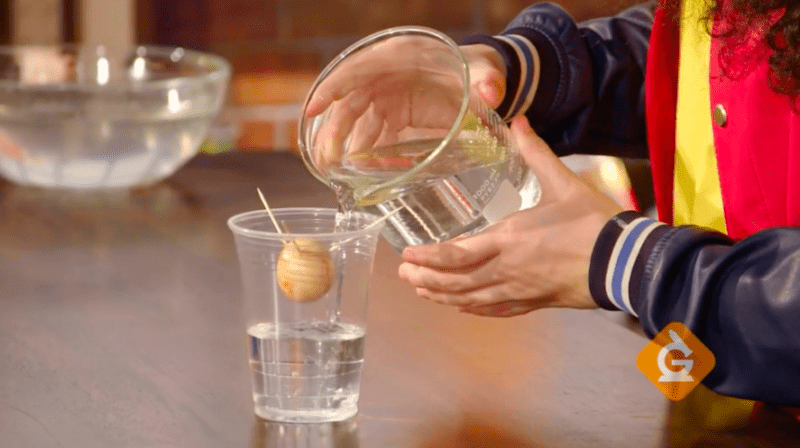
Did you know that an avocado seed has a fault line? Learn this and more in this DIY activity which teaches kids how to grow their own avocado plant.
Learn more: Grow an Avocado by Generation Genius
16. Explode a seed pod
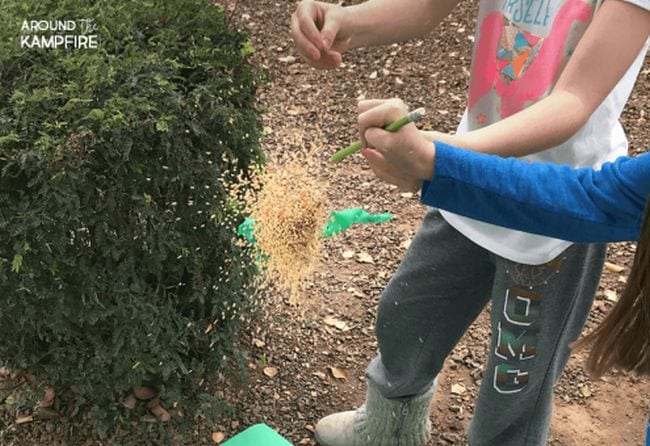
Plants that rely on seeds as part of their life cycle need to ensure they spread far and wide. Some plants even have exploding seed pods that help the process along! Learn about them in this cool activity.
Learn more: Seed Pods Activity from Around the Kampfire
17. Display a life cycle bulletin board
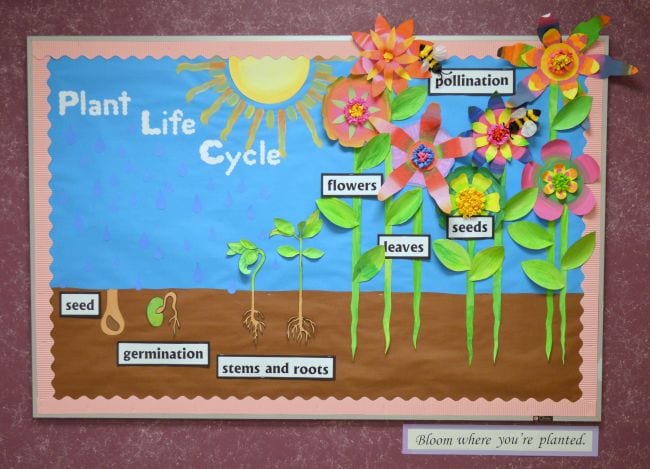
We love how clean and easy to understand this plant life cycle bulletin board is. And those colorful flowers are a fantastic touch!
Source: Life Cycle Bulletin Board from Leslie Anderson/Pinterest
18. Go outside to conduct a plant study

After reading a story about what botanists do, students head outside to do a little field work themselves. Not only will they learn a lot, they may help clean up the school grounds!
Learn more: Botanist for the Day by FirstieLand
19. Create a plant life cycle hat

Get some practice sequencing as you cut out and paste together this sweet little topper. Kids will love wearing it as they learn.
Learn more: Plant Life Cycle Hats from Herding Kats in Kindergarten
20. Learn how seeds spread
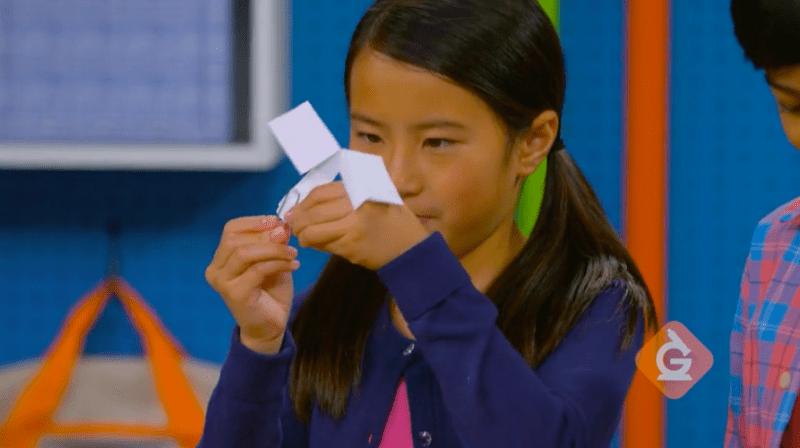
Using a piece of paper and a paper clip, students will make a model of a maple seed. When they launch their seeds they can watch them spin to the ground like a helicopter.
Learn more: Make a Seed Model by Generation Genius
21. Fold a flower flip-book

The petals of this free printable flower unfold to reveal the stages of a plant’s life cycle. So clever!
Learn more: Flower Flip Book from Teaching Momster/Teachers Pay Teachers
22. Diagram paper plants with shredded soil
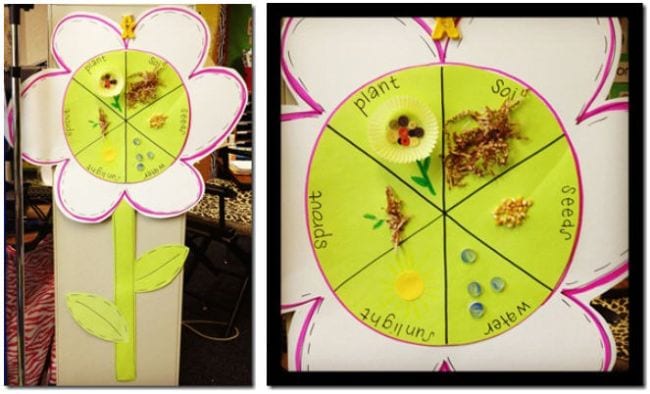
This plant life cycle diagram uses paper shreds for soil, a cupcake liner for the flower, and more smart little details that kids will really appreciate.
Learn more: Diagram Paper Plants from Cara Carroll
23. Leaf Chromotography

The different colors found in leaves are created by different chemicals-chlorophyll, flavonoids, carotenoids, and anthocyanins. In this experiment students will see if they can get the pigments in the leaves to separate through chromatography so they can take a closer look at the colors found inside leaves.
Learn more: Leaf Chromotography by A Little Pinch of Perfect
24. Paint with Chlorophyll

Integrate art as students learn the importance of chlorophyll and its role in how a plant makes its own food.
Learn more: Paint with Chlorophyll by Around the Kampfire
25. Try a digital flip-book

Learning online? This free digital activity includes a printable version for kids to complete at home, but it can also be completed virtually to save paper.
Learn more: Digital Flip Books from Conversations in Literacy
26. Compare soils

Plants need many things to grow: sunlight, water and food. In this experiment students will see which plant grows better, one in plain soil or one in fertilized soil.
Learn more: Plant Growth Conditions activity by Generation Genius
27. Regrow kitchen scraps

Here’s another project showing that not every plant needs seeds. Save kitchen scraps and try regrowing them, with or without soil.
Learn more: Regrow Kitchen Scraps from A Piece of Rainbow
If you liked these plant life cycle activities, check out Clever Ways to Bring Gardening Into the Classroom.
Plus, get all the latest teaching tips and ideas when you sign up for our free newsletters!
